
Vertigo Comics was an imprint of American comic book publisher DC Comics started by editor Karen Berger in 1993. Vertigo's purpose was to publish comics with adult content, such as nudity, drug use, profanity, and graphic violence, that did not fit the restrictions of DC's main line, thus allowing more creative freedom. Its titles consisted of company-owned comics set in the DC Universe, such as The Sandman and Hellblazer, and creator-owned works, such as Preacher, Y: The Last Man and Fables.
Shawn McManus is an American artist who has worked extensively over three decades for DC Comics and other companies, notably for DC's Vertigo imprint including the Fables series.

William Willingham is an American writer and artist of comics, known for his work on the series Elementals and Fables.
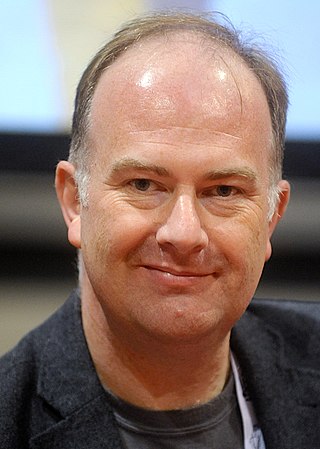
Mark Buckingham is a British comic book artist. He is best known for his work on Marvelman and Fables.
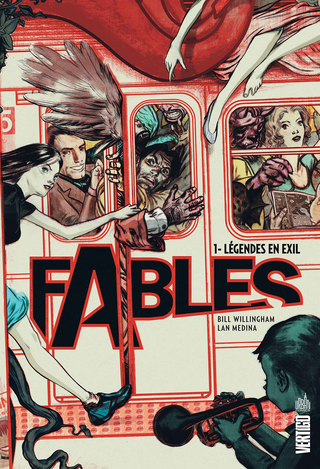
Fables is an American comic book series created and written by Bill Willingham, published by DC Comics' Vertigo imprint. Willingham served as sole writer for its entirety, with Mark Buckingham penciling more than 110 issues. The series featured various other pencillers over the years, most notably Lan Medina and Steve Leialoha. Fables was launched in July 2002 and concluded in July 2015. It was revived in 2022 with a 12-issue continuation to the main series, as well as a 6-issue spin-off miniseries Batman vs. Bigby! A Wolf in Gotham, both published under DC Black Label.
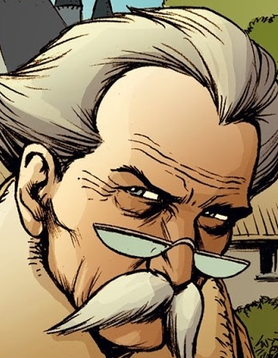
Geppetto is a major character, albeit one that's rarely seen, in the comic book series Fables, written by Bill Willingham and published by DC Comics as part of the Vertigo imprint.

Fables: 1001 Nights of Snowfall is a graphic novel prequel to the comic book series Fables written by series creator Bill Willingham with a variety of artists. It was released on October 18, 2006 by Vertigo.
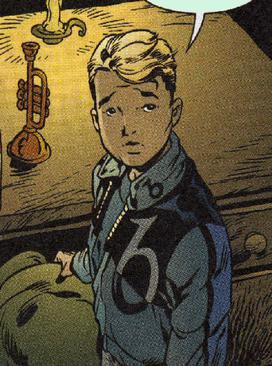
Boy Blue is a major character in the Vertigo comic book series Fables. He is based on the nursery rhyme character Little Boy Blue. At the beginning of the series, he is portrayed as an efficient but meek office clerk helping Snow White run Fabletown; however, he has a colorful and violent history that is gradually revealed as the series goes on.

Jack Horner is a fictional character in the comic book series Fables by Bill Willingham. His first appearance was in issue #1 of Fables and he continued as a regular character of the series until leaving the series for his own title, Jack of Fables. The character is based on various nursery rhymes and fables with characters named Jack, including Little Jack Horner, Jack and the Beanstalk, Jack and Jill, Jack Be Nimble, Jack Frost, Jack O'Lantern, and Jack the Giant Killer, and among others.

Steve Leialoha is an American comics artist whose work first came to prominence in the 1970s. He has worked primarily as an inker, though occasionally as a penciller, for several publishers, including Marvel Comics and later DC Comics.
The Homelands are the mythical lands from fairy tales, folklore, and nursery rhymes in the comic book series Fables. The majority of those listed have been conquered by the mysterious Adversary, as he has conquered most of the European Fable lands. This is a list of the Homelands that have been directly referenced in Fables and its spin-offs Jack of Fables, Cinderella: From Fabletown with Love, Cinderella: Fables are Forever and Fairest.
The Golden Boughs Retirement Village is a fictional prison masquerading as a retirement home for fables in the Fables spin-off Jack of Fables. It is run by a man called himself Mr. Revise. The name is an explicit reference to The Golden Bough, a lengthy study in the comparative mythology, religion and folklore of hundreds of cultures, from aboriginal and extinct cultures to 19th-century faiths.

Lilah Sturges is an American writer of comics and fantasy novels. She is best known for co-writing with Bill Willingham the Eisner-award-nominated Jack of Fables, and other comics published by Vertigo Comics / DC Comics.
Clockwork Storybook (CWSB) was a writer's collective and independent book publisher based in Austin, Texas. It specialized in the fantasy, horror and adventure genres.
Tony Akins is an artist, penciling and inking for DC/Vertigo who has contributed to the titles Jack of Fables, Fables, Hellblazer, House of Mystery and alternate issues of Wonder Woman for The New 52 relaunch.
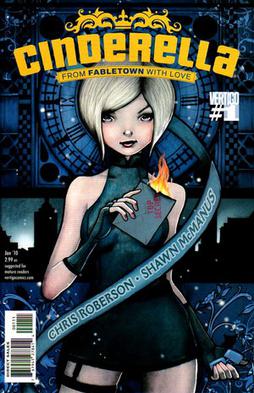
Cinderella: From Fabletown with Love was an American comic book limited series published by Vertigo Comics in 2009 and 2010, and set in the world of Fables. The story portrays Cinderella as a secret agent, performing missions on behalf of Fabletown. Its title is an allusion to the James Bond novel From Russia, with Love.

The Wolf Among Us is an episodic graphic neo-noir mystery-drama adventure game developed by Telltale Games, based on Bill Willingham's Fables comic book series, to which it serves as a prequel. The game consists of five episodes that were released throughout 2013 and 2014. Retail versions for the PlayStation 3, PlayStation 4, PlayStation Vita, Xbox 360, and Xbox One consoles were made available in November 2014. In the game, players control Bigby Wolf, the sheriff of Fabletown – a clandestine community within 1980s New York City consisting of various fantastical characters from fairy tales and folklore – and must investigate a series of mysterious murders, the first ones to occur in Fabletown in a long time.
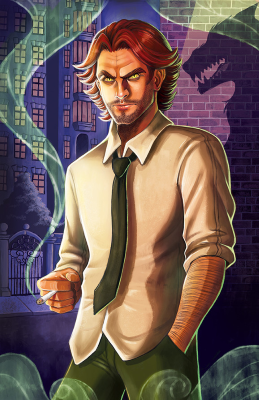
Bigby Wolf is a fictional character in the American comic book series Fables published by DC Comics and its alternative imprint Vertigo. The character first appears in Fables #1 and was created by Bill Willingham and Lan Medina. He frequently serves as the lead character among the ensemble cast of Fables and is the central protagonist of Fables: Werewolves of the Heartland as well as Fables: The Wolf Among Us, the comic book adaptation of the 2013 video game The Wolf Among Us.
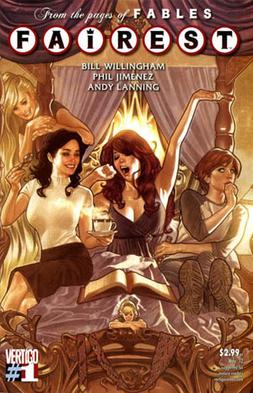
Fairest is an American monthly comic series created by Bill Willingham, published by DC's Vertigo. A spin-off of Fables, Fairest detailed the adventures and stories of Fabletown's female citizens and heroines. Fairest was described by Willingham as a series of miniseries, with each arc telling self-contained stories.















